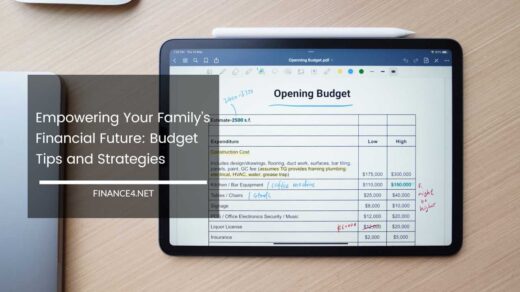Revenue Management: Method, Objectives and Levers

Revenue Management: A Strategic Approach to Maximizing Profitability
In today’s dynamic business environment, where competition is fierce and customer expectations are constantly evolving, revenue management (RM) has emerged as a critical differentiator for organizations seeking to optimize profitability.
Moving beyond simply increasing sales, RM represents a strategic approach that leverages data analytics and customer behavior insights to make informed decisions regarding pricing, inventory management, and distribution channels.
Core Objectives of Revenue Management:
- Maximizing Revenue Growth: The primary objective of RM is to strategically increase income by optimizing the utilization of available resources. This involves setting prices that capture the maximum value customers are willing to pay, managing inventory levels efficiently to avoid stockouts and overstocking, and employing targeted distribution channels to reach the right audience at the right time.
- Enhancing Customer Value: While aiming for revenue maximization, RM also strives to deliver value to customers. This translates to offering the right product or service at a price point that aligns with their perceived value. Effective RM practices ensure customers receive a satisfying experience without feeling unfairly priced.
- Improving Profitability: Effective RM goes beyond just increasing top-line revenue. It also considers cost factors associated with production, storage, and distribution. By optimizing resource allocation and pricing strategies, businesses can achieve a healthy balance between revenue and expenses, leading to improved profitability.
Levers of Revenue Management:
-
Pricing Strategies: This lever plays a crucial role in RM. Businesses employ various pricing tactics to capture the maximum value from their offerings while remaining competitive.
- Value-based pricing: Establishes prices based on the perceived value customers place on the product or service. Market research and competitor analysis are crucial for understanding customer value perception.
- Demand-based pricing: Adjusts prices based on real-time demand fluctuations. Prices may increase during peak seasons (e.g., holiday travel) or for highly sought-after products.
- Competitor-based pricing: Analyzes competitor pricing strategies to set prices that remain competitive while maintaining profitability.
-
Inventory Management: Effective inventory control is essential for RM. Businesses need to strike a balance between:
- Overstocking: Leads to increased storage costs, potential product obsolescence, and the risk of spoilage for perishable goods.
- Understocking: Results in lost sales opportunities and potential customer dissatisfaction.
RM techniques like forecasting demand based on historical data, market trends, and competitor analysis, coupled with implementing just-in-time inventory management practices, help maintain optimal stock levels.
-
Marketing and Distribution Channels: Promotional strategies and distribution channels significantly impact revenue generation.
- Targeted marketing: Focuses on reaching specific customer segments with relevant messaging and offers, maximizing the return on marketing investments. This involves leveraging customer data and segmentation techniques to personalize communication.
- Distribution channel selection: Choosing the right channels to reach the target audience efficiently. Online channels often offer lower distribution costs compared to traditional brick-and-mortar stores. However, the choice of channel may also influence customer perception and brand image.
The Revenue Management Process – A Data-Driven Approach:
-
Data Collection: Gathering comprehensive data is the foundation of effective RM. This includes:
- Historical sales data: Provides insights into past customer behavior and buying patterns.
- Inventory levels: Helps track stock availability and identify potential shortages.
- Pricing data: Allows for competitor analysis and informed pricing decisions.
- Market trends: Provides valuable information about broader economic conditions, consumer preferences, and potential disruptions.
-
Market Segmentation: Dividing the customer base into distinct groups with similar characteristics and purchasing behaviors. This enables businesses to tailor their offerings and pricing strategies to specific segments. Segmentation can be based on demographics, purchasing habits, and perceived value.
-
Forecasting: Predicting future demand for products and services. This crucial step involves leveraging various techniques like:
- Time series analysis: Analyzes historical data to identify trends and seasonality.
- Econometric modeling: Considers factors like economic indicators and competitor actions to predict demand.
- Machine learning: Advanced algorithms can analyze vast amounts of data to identify complex patterns and predict future demand with greater accuracy.
-
Optimization: This stage involves analyzing various options and employing techniques like:
- Linear programming: A mathematical method to find the optimal solution (e.g., pricing strategy) that maximizes a specific objective function (e.g., revenue) while considering constraints (e.g., capacity limitations).
- Regression analysis: Helps identify the relationship between various factors (e.g., price, demand) to understand how changes in one variable might affect another. This knowledge allows for informed decision-making regarding pricing strategies
- Simulation modeling: Creates a virtual representation of the market to test different pricing and inventory allocation scenarios before implementation, minimizing potential risks.
-
Dynamic Re-evaluation: The market environment is constantly evolving. Therefore, continuous monitoring and adjustments are necessary. Effective RM practices require ongoing evaluation of:
- Pricing: Regularly assess the effectiveness of pricing strategies based on real-time demand data and competitor actions.
- Product Offerings: Adapt product bundles or service packages to cater to changing customer preferences and market trends.
- Distribution Channels: Monitor the performance of different distribution channels and adjust allocation strategies to maximize reach and sales.
Advanced Techniques in Revenue Management:
- Artificial Intelligence (AI): AI algorithms can analyze vast amounts of customer data and market trends in real-time, enabling businesses to make more precise forecasts and optimize pricing strategies dynamically.
- Big Data Analytics: Leveraging big data allows businesses to gather and analyze a wider range of data points, providing a more comprehensive understanding of customer behavior and market dynamics.
Applications of Revenue Management across Industries:
- Hospitality: Hotels and airlines dynamically adjust room rates and flight fares based on factors like seasonality, demand fluctuations, and competitor pricing.
- Transportation: Car rental companies and ride-sharing services employ RM to optimize pricing based on time of day, demand, and vehicle availability.
- Retail: Stores implement dynamic pricing strategies like flash sales and targeted promotions to clear inventory and maximize revenue.
- Entertainment: Movie theaters and event organizers use RM to adjust ticket prices based on anticipated demand and seat availability.
- Professional Services: Consulting firms and law firms may employ RM to optimize engagement models and pricing structures based on client needs and project complexity.
The Future of Revenue Management:
As technology continues to evolve, the future of RM lies in:
- Enhanced Automation: AI-powered tools will automate various aspects of the RM process, enabling faster and more precise decision-making.
- Real-time Optimization: Businesses will leverage real-time data and AI to dynamically adjust prices and offerings based on constantly changing market conditions.
- Focus on Personalization: RM strategies will become increasingly personalized, tailoring offerings and pricing to individual customer preferences and purchase history.
Final Remarks:
Revenue management has transformed from a simple pricing tactic into a sophisticated approach that empowers businesses to maximize revenue, enhance customer value, and achieve sustainable profitability.
By embracing data analytics, adopting advanced technologies, and continuously adapting to the dynamic market landscape, organizations can leverage RM as a strategic lever to gain a competitive edge in today’s ever-evolving business environment.
Image Credit: SalFalko



